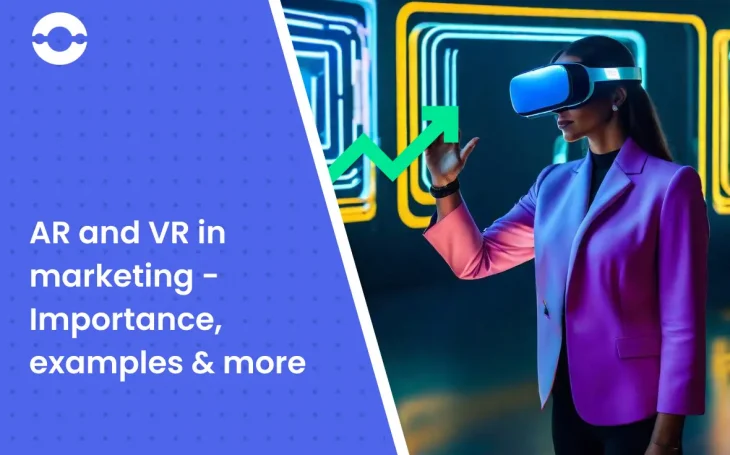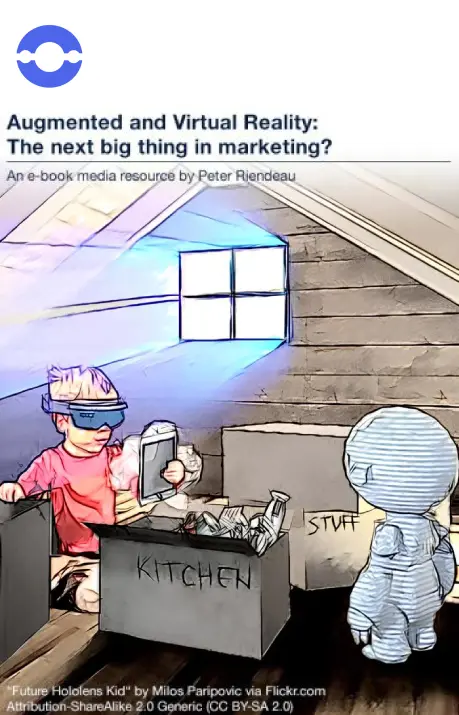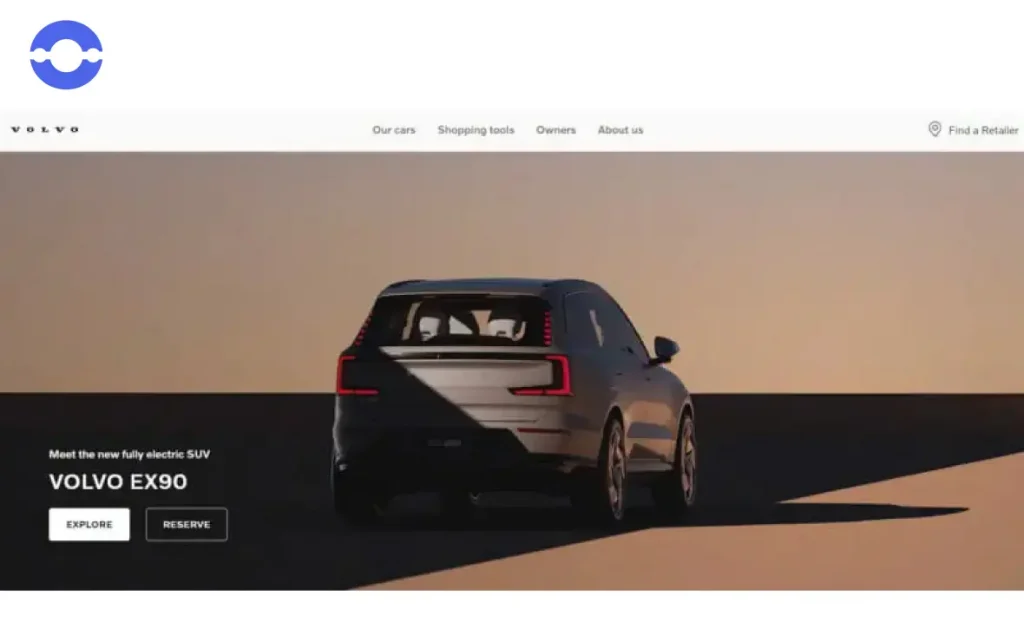
In this fast-changing world, marketing is all about satisfying the needs and wants of customers. One such emerging technology that is going to level up the game of marketing is Augmented reality and Virtual reality.
Brands don’t need to do hard-core sales to push products, rather customers come to them. With just a few taps, consumers can view the product from all angles before making a purchase.
There are countless advantages that AR/VR provides to marketers such as building brand awareness, enhancing customer experience, speeding up the purchasing process, and driving more conversions.
In this blog, we will uncover AR and VR in marketing, various brand examples that are leveraging this technology to delight their customers, and the benefits along with it.
What is AR in Marketing?

Augmented reality in marketing is considered an effective tool for marketing campaigns and companies that are leveraging this technology in marketing content see exponential growth in their business.
AR in marketing superimposes digital content in the physical environment to create immersive experiences for customers. These days more and more businesses are using this tool to get more sales, generate buzz about their product or service, and enhance customer experience.
Marketers are trying to create interactive and personalized experiences for customers such as virtual try-on experiences, interactive advertisements, etc.
AR and VR in advertising help advertisers to capture customers’ attention and increase their business sales.
According to a report from Mobile Marketer, 1% of retailers are using AR technology in customer buying processes and meeting customer expectations.
Customers get an understanding of what the product is, they can feel and see how the product would look like in space. On the flip side, brands can stand out from others by showing their products/services to ease customer doubts and double their sales.
Even, 61% of consumers prefer buying products from retailers who provide AR experiences to customers because they feel more confident about the quality of the product.
Examples of AR in marketing:
• IKEA
IKEA a Swedish furniture brand makes effective use of AR campaigns and allows customers to place virtual furniture in their rooms.
It launched an IKEA PLACE where customers can virtually try furniture that fits their room. There was a new feature in the IKEA app allowing users to scan the physical environment and choose their favorite furniture.
With this tool, customers can make purchases quickly and it would save time and effort for the sales team.
According to the IKEA team, this AR app reduces their product returns by 20% and their sales increased by 35%.
• Sephora
Sephora’s virtual artist app allows users to virtually try on various products first, making online shopping easier. They can try various makeup products on their eyes and lips and buy those they are comfortable with.
• Burger King app
With the Burger King app, customers can burn competitor ads. Simply stand in front of an ad, open the Burger King app, and hit the button.
When you capture the poster, the app burns the poster and instead creates a Burger King ad. Burger King will give a whopper to those who click the poster. Here, the company aims to convert its customers into loyal users.
What is VR in marketing?
Companies need to adapt to new advances to deliver the best possible experiences to customers.
Earlier, brands relied on traditional sources such as brochures and billboards to communicate with customers.
With VR, marketers are compelled to rethink their marketing efforts and provide immersive experiences to customers.
Moreover, 53% of adults are interested in buying from brands that use VR to promote their products/services.
Products displayed through VR create a strong connection between the user and the product.
Consider VR in marketing as a scenario where a consumer, instead of reading content on the screen, interacts with a virtual avatar.
Virtual reality in marketing goes beyond traditional marketing on TV and in printed media. It provides a comforting experience to customers as they can try and handle products virtually.
When users try VR headsets, they are transported to a virtual environment and go with a try-before-you-buy concept, making your brand more memorable in the eyes of customers.
Examples of VR in marketing:
1. Thomas Cook
Thomas Cook Thomas Cook, a UK-based travel agency thought to come up with a “Try before you Fly campaign”.
Such a campaign allows people to experience snorkeling, see pyramids, or take a helicopter tour. Because people can get VR experiences and a chance to travel to places such as Egypt, the US, Greece, and Singapore.
This campaign was successful and increased the conversion rate for bookings as now more people have started booking trips.
2.Volvo Test Drive

Volvo test drive What if the test drive would become easy for you even if you don’t have a nearby car dealership?
But Volvo solves this challenge by leveraging VR technology and allowing customers to go for a test drive using its app. You can go on a cool adventure and get to see 360-degree views.
The best part is that you don’t need to have a VR headset to experience all this because an app is enough for you to go on a weekend gateway. Their marketing campaign was successful resulting in more than 20,000 downloads.
Also Read: AR And VR In The Retail Industry
Importance of AR in Marketing
Here are some advantages that businesses will get by employing this cutting-edge technology to provide immersive experiences for customers.
1. Increases the discoverability of your brand
The number of smartphone users is increasing year by year. Currently, there are around 5.25 billion smartphone users worldwide in 2023 which is expected to increase to 6.16 billion by 2028.
When it comes to VR headsets, not everyone can afford it because these high-tech gadgets are expensive.
On the contrary, customers can experience AR simply through their smartphone or by downloading an app on their device.
With the rapidly growing smartphone market, customers can access the content and explore your products by leveraging AR capabilities all within their comfort zone.
2. Increases customer engagement
AR in marketing provides more interactive experiences to customers; all they need to do is point their smartphone towards a product and start interacting with 3D content.
For example, a cosmetics company can enhance customer experience by allowing them to virtually try on different shades of lipstick to see how they would suit their face.
Sephora adopted a “TRY BEFORE YOU BUY APPROACH,” where customers can digitally wear different makeup products, accessories, or clothing.
Augmented reality technology makes it easier for customers to interact with brands in unforgettable ways, providing interactive games and virtual product descriptions, making customers more likely to remember the brand and become loyal fans in the long term.
3. Increases your brand awareness
Every company wants to be recognized by customers, and using AR as part of its marketing strategy helps the brand maintain closer relationships with customers.
Research studies state that customers who spend three times the amount of time engaging with your AR app are more likely to remember your brand name compared to brands that don’t leverage such technology.
For example, Pepi launched a bus stop ad using AR technology.
Sharing such AR campaigns is unique, engaging, and entertaining, enhancing the customer experience.
When customers interact with such campaigns, they are more likely to share the content, increasing brand awareness.
4. AR increases your business sales
AR in marketing increases your conversion rate because it provides a better understanding for customers to see how the product works and they can view the product from different angles.
AR allows marketers to create interactive product demos where buyers can experience products before making a purchase.
With AR and VR, the purchasing stage happens quickly as customers can virtually try the products before buying.
5. Cost-effective for business
Many marketers believe that AR-based ads are more expensive than traditional media.
If you think about the long term, it’s high time for you to launch AR marketing campaigns as they reduce the need for physical product demos and save a lot on your advertising budget.
If you are still trying to reach customers through boring emails or catalogs, there won’t be a guarantee that it will work. AR marketing campaigns turn your dull content into an impactful message and make customers feel, think, and react.
Moreover, brands can create AR-based apps and bring their products to life.
In the 21st century, marketers should stop focusing on pushing products and instead use innovative technological solutions to reach their customers.
Also Read: AR And VR In Construction Industry
Importance of VR in Marketing
Adopting VR in marketing is crucial for your business as it provides an immersive experience for your customers.
1. Captures users’ attention
In this digitalized world, it has become challenging for brands to capture the attention of customers.
VR is not just limited to mere presentations and photos. It’s completely immersive as your customers can see, hear, and feel as if they are present right there in another place.
Thus, your imagination isn’t limited anymore.
Virtual reality in marketing adds value to customer’s life because it transports the users to the virtual world where they can explore virtual space and interact with products virtually.
2. VR offers personalized experiences
Virtual reality transforms the way we shop and consume products as this technology makes it easier for marketers to deliver targeted and personalized experiences.
From virtually trying products to becoming a virtual guest, all THANKS to VR.
For Instance – If you are a clothing retailer, you can create a virtual environment allowing customers to try different outfits according to their body shape and personal preference.
3. Increases customer engagement
Marketers can increase customer engagement rates by including VR as part of their marketing strategy.
By wearing a VR headset, customers can virtually try your product/service and get a first-hand experience without leaving their comfort zone.
Such immersive digital experiences make them more excited as they can interact with products from a 360-degree perspective.
It breaks the barrier and bridges the gap between the real and virtual world, whether for test driving a car virtually, having a virtual tour, or going on a thrilling adventure.
4. Connect with customers through virtual storytelling
Brands are using the power of immersive storytelling to create unforgettable experiences for customers.
Storytelling was already a powerful weapon for brands to connect with their target customers, but VR takes that storytelling to the next level.
By leveraging the power of storytelling, brands can create more memorable experiences and have a high emotional effect on customers.
For instance, McDonald’s ran a “Happy Google” marketing campaign in Sweden where you can turn a happy meal box into a VR viewer, and children can play games from a plain cardboard box.
Wrapping up
Online shopping was already a trend, but it is now a necessity. With changing customer expectations, brands need to monitor and tap emerging technologies such as AR/VR to develop deeper connections with customers.
So, marketers these days are adapting to such trends by incorporating AR and VR into their marketing strategies.
AR and VR in marketing prove to be game changers for businesses by transporting users to a virtual world where they can virtually interact with the product, creating a great shopping experience for them.
As a consumer, you might have come across brands that are investing their time and efforts in such technologies. Whether it’s about increasing your brand awareness or boosting your brand engagement efforts, leveraging AR/VR can supercharge your marketing game.
Do you want to WOW your customers with immersive experiences?
Then, you’ve landed at the right place. At BigOhTech, our dedicated AR/VR experts have years of experience in transforming traditional business processes into modernized applications.
We understand your business problems and then come up with exceptional custom-made AR/VR solutions that are affordable for your business.
Furthermore, we work around the clock so that your product is always upgraded as per the latest technological advancements and is always up and running.
We have served a client who is a renowned player in the Proptech industry, and we helped them by redefining the entire Proptech landscape.
We developed an AR/VR app allowing homeowners to take snapshots of the area that needs renovation. The app calculates the estimated price for the renovated area. Moreover, the client was able to view how the property would look post-renovation.




